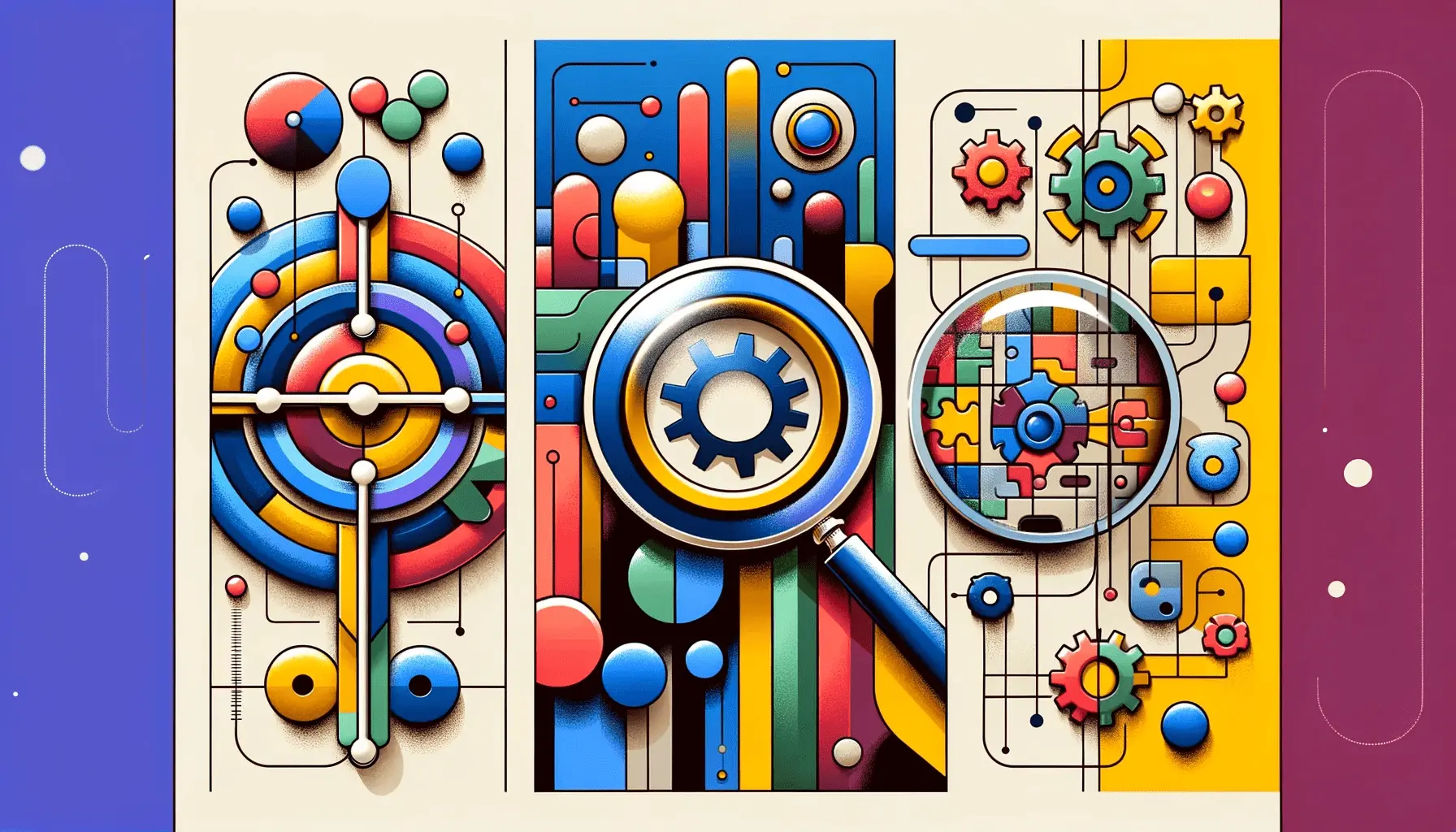YouTube Ads are more than just a promotional platform; they are a canvas on which brands can create stories that engage and inspire.
Today, in this fast-paced digital age, storytelling is the ultimate tool for connecting with your audience on a deeper level.
By weaving a narrativeA structured account of events or experiences, often used to convey a story. into your ads, your brand message can be transformed into something truly memorable and relatable.
This article will guide you through three powerful storytelling techniques designed to elevate your YouTube Ads and make them unforgettable.
- The Power of Storytelling in YouTube Advertising
- Technique 1: The Hero’s Journey Framework
- Technique 2: Emotional Storytelling Strategies
- Technique 3: Utilizing Visual Storytelling Elements
- Integrating Storytelling Techniques into Your YouTube Ads
- Mastering Storytelling in YouTube Ads
- Frequently Asked Questions About Storytelling in YouTube Ads
The Power of Storytelling in YouTube Advertising
Storytelling lies at the very heart of human communication.
It’s how we share experiences, convey emotionsStrong feelings derived from circumstances, mood, or relationships., and inspire action.
In YouTube advertising, the art of storytelling takes center stage.
With millions of ads competing for airtime, a well-spun narrative can differentiate your brand and hook viewers long after they’ve clicked away from your ad.
But why does storytelling matter so much in YouTube ads?
Because stories have the power to evoke emotions, and emotions drive decisions.
When viewers connect emotionally with an ad, they’re more likely to remember the brand, engage with its message, and take the desired action.

A team collaborating on crafting digital marketing strategies with a focus on storytelling.
Why Storytelling Matters in Digital Marketing
Digital marketing is all about connections, and storytelling is the glue that keeps a brand connected to its audience.
By using storytelling in YouTube advertising, you can:
- Build Trust: Sharing a relatable or genuine story makes your brand more credible and trustworthy.
- Enhance Engagement: Viewers are more likely to watch, share, and comment on videos that resonate emotionally with them.
- Improve Recall: People remember stories far better than isolated facts or statistics.
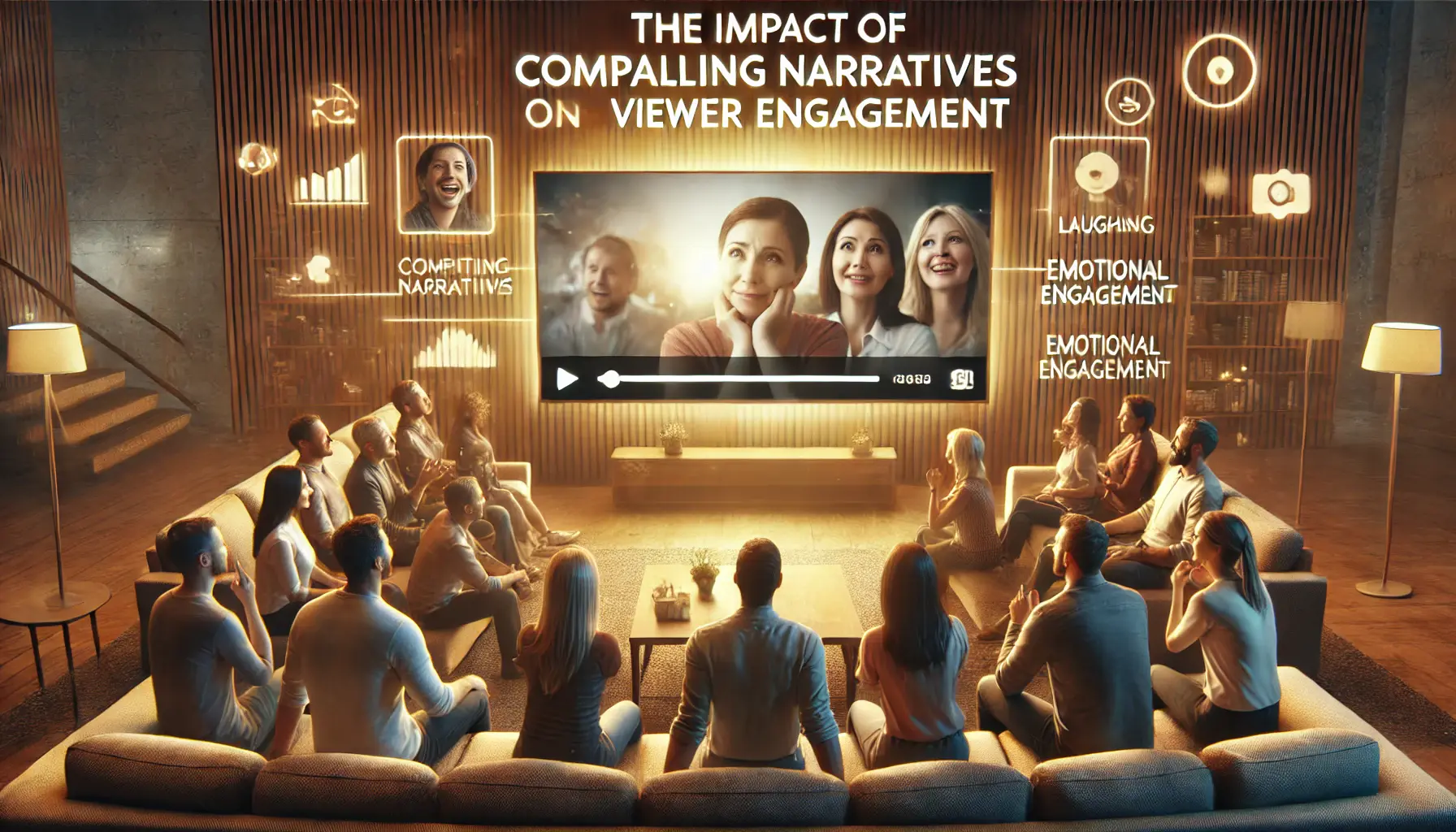
Emotional reactions to compelling narratives in digital advertising, showcasing viewer engagement.
Impact of Compelling Narratives on Viewer Engagement
When you tell a compelling story, you’re not just capturing attention; you’re creating an experience.
Studies show that ads with strong narratives result in higher view-through rates and better audience retention.
By focusing on emotional arcs, relatable characters, and real-life challenges, you can forge a meaningful connection with your audience.
Consider ads that leave you smiling, thinking, or even tearing up.
These are the ones that stand out amidst the noise because they go beyond selling a product—they make you feel something.
When your YouTube ad becomes a story worth sharing, its reach and impact multiply organically.

A team brainstorming and analyzing the impact of successful storytelling in YouTube ads.
Case Studies: Successful Storytelling in YouTube Ads
Certain brands have mastered storytelling in their YouTube campaigns.
Think about Nike or Coca-Cola telling life stories.
These ads don’t just showcase products; they highlight aspirations, struggles, and triumphs.
Such storylines nurture loyalty and turn viewers into advocates.
For instance, a commercial featuring an athlete overcoming challenges can inspire viewers to work toward their goals while creating a deep and lasting connection with the brand.
By analyzing such examples, you can learn how to create impactful stories for your YouTube ads.
Storytelling is not just a strategy; it’s a necessity in today’s digital landscape.
As we dive into specific techniques, you’ll discover ways to make your YouTube ads resonate with audiences in powerful and meaningful ways.
Storytelling is the foundation of memorable YouTube ads, creating emotional connections and driving audience engagement. Harness its potential to stand out in a competitive landscape.

A visual representation of the Hero’s Journey framework, symbolizing a transformative adventure.
Technique 1: The Hero’s Journey Framework
One of the most enduring storytelling structures is the Hero’s JourneyA narrative framework outlining a protagonist's adventure, challenges, and transformation., a narrative framework that has been utilized for centuries across various cultures.
This framework outlines a protagonistThe main character in a story, often driving the narrative forward.‘s adventure, challenges, transformation, and return.
Incorporating the Hero’s Journey into your YouTube ads can create compelling narratives that resonate deeply with viewers.

Depicting the Hero’s Journey framework in advertising, showing a transformative journey with a product as the mentor.
Understanding the Hero’s Journey in Advertising
The Hero’s Journey usually consists of several stages: the call to adventure, crossing the threshold, trials, revelation, and returning transformed.
In advertising, the customer often plays the role of the hero, embarking on a journey where your product or service becomes their mentor or tool to help solve problems.
This approach positions your brand as an enabler of the customer’s success.

undefined
Implementing the Hero’s Journey in Your YouTube Ads
To effectively implement the Hero’s Journey in your YouTube ads, consider the following steps:
- Identify the Hero: Position your target audience as the hero of the story.
- Define the Challenge: Highlight a problem or need that the hero faces.
- Introduce the Mentor: Present your product or service as the solution that guides the hero.
- Reveal the Transformation: Show how the hero’s life is better after using your product or service.
By following this process, you can develop a story that showcases your offering while appealing to the emotional journey of your audience.
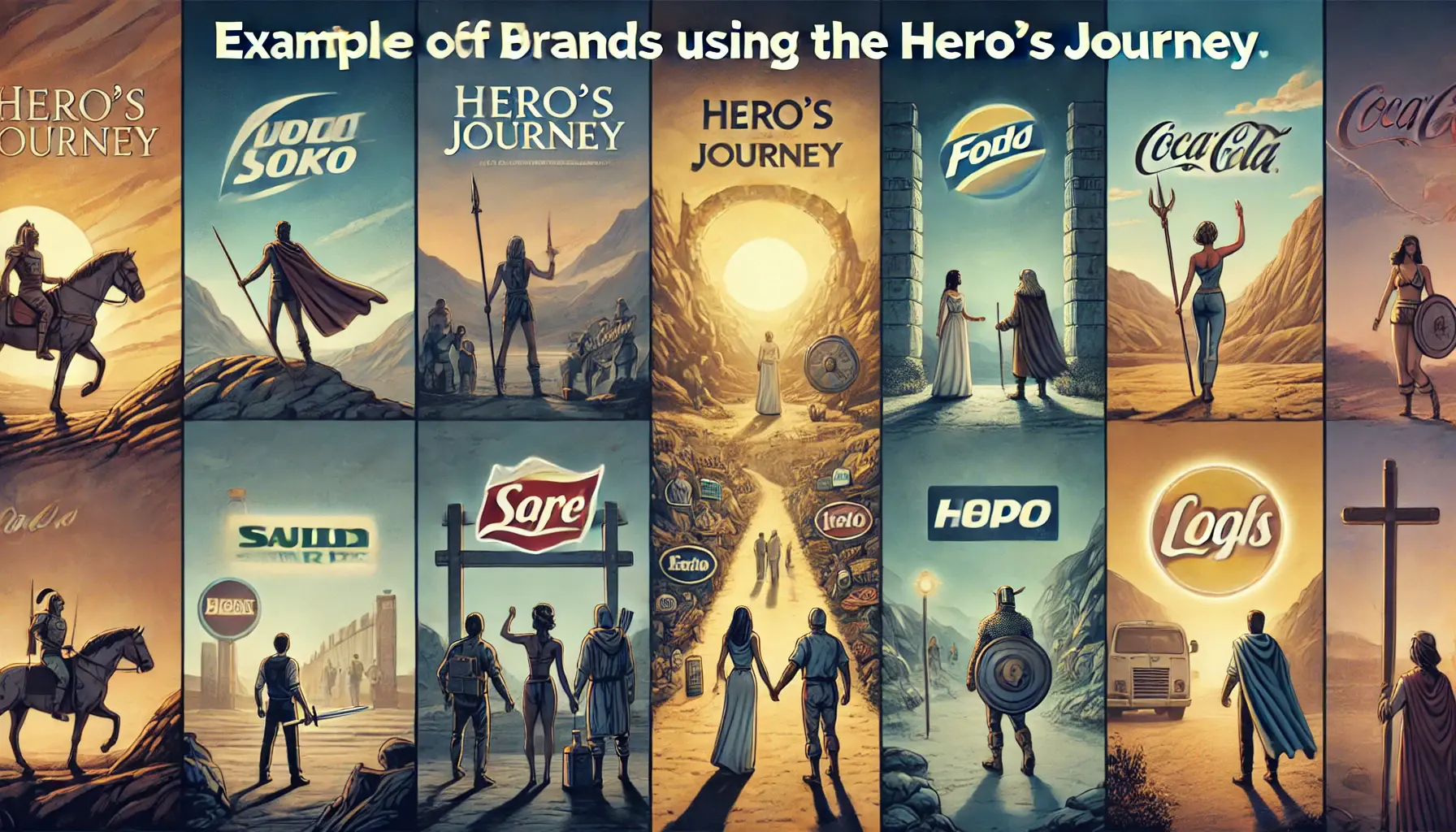
Visual representation of brands using the Hero’s Journey framework to guide customers through their challenges.
Examples of Brands Using the Hero’s Journey
- Kia’s “Hero’s Journey” Super Bowl Ad: This ad places actress Melissa McCarthy on a variety of environmental missions, humorously highlighting the challenges faced by eco-warriors. The ad positions the Kia Niro as the trusted companion aiding her on those journeys.
- Lyft’s “Yes, You Are a Bike Person” Campaign: Lyft encourages viewers to embrace biking, positioning the audience as heroes embarking on a new journey, supported by Lyft’s bikeshare services.
These examples demonstrate how aligning your brand with the Hero’s Journey can create engaging and memorable YouTube ads that leave a lasting impression on viewers.
Position your audience as heroes, facing challenges with your product as their guiding tool. This approach fosters deeper connections and highlights your brand’s value.

Emotional storytelling strategies in advertising, highlighting the emotional connection between the audience and the narrative.
Technique 2: Emotional Storytelling Strategies
Emotional storytelling is a powerful tool in YouTube advertising, enabling brands to connect with audiences on a deeper level.
By tapping into emotions, you can create memorable ads that resonate and inspire action.
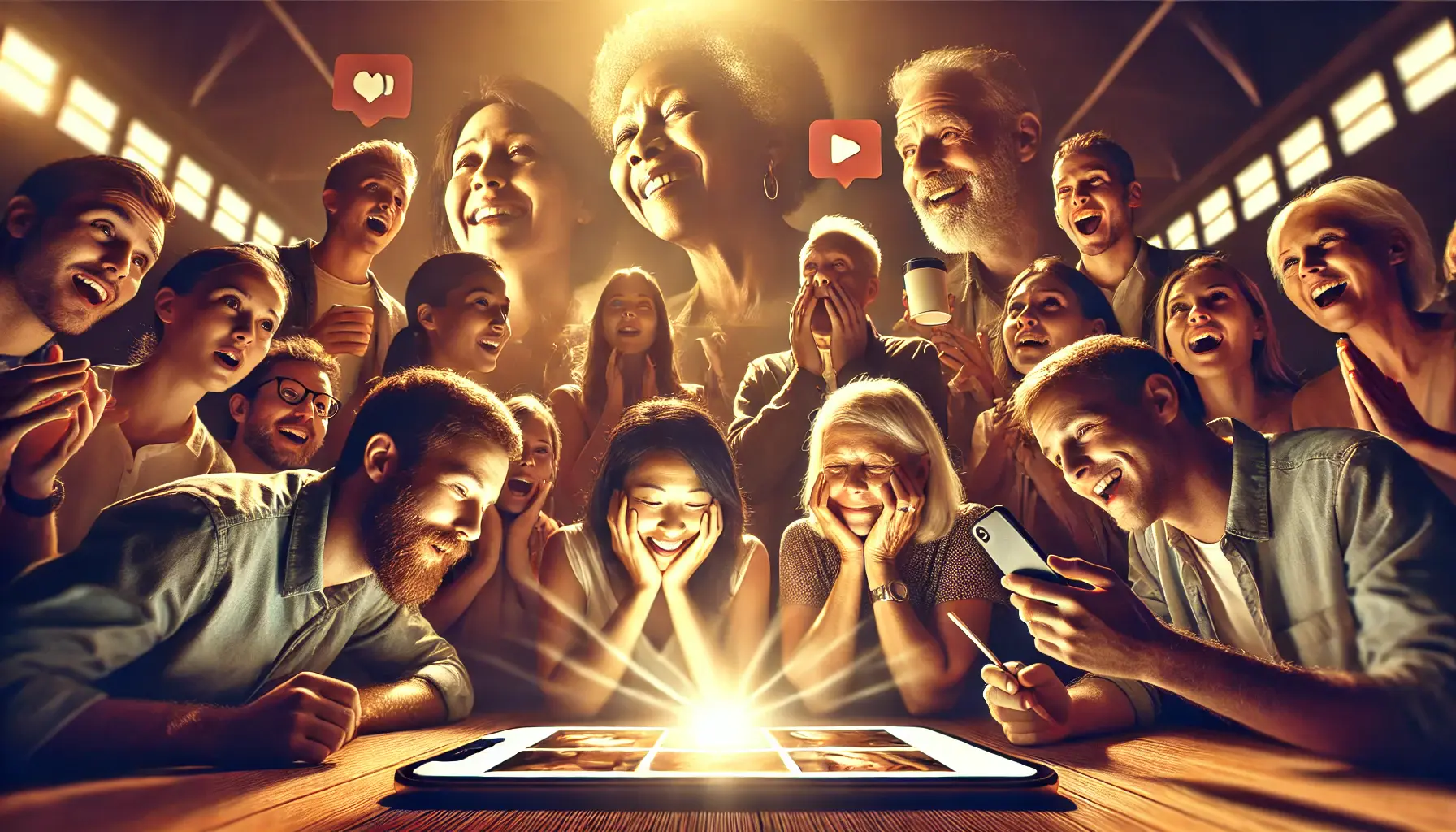
Connecting with audiences through emotional engagement in advertising, highlighting the power of emotional connections in digital media.
Connecting with Audiences Through Emotion
Emotions drive decisions.
Ads that evoke feelings such as joy, nostalgia, or empathy are more likely to be remembered and shared.
To connect emotionally with your audience:
- Understand Your Audience: Research your target demographic to identify the emotions that resonate with them.
- Tell Authentic Stories: Share genuine narratives that reflect real experiences and values.
- Use Relatable Characters: Feature characters that mirror your audience’s lives and challenges.
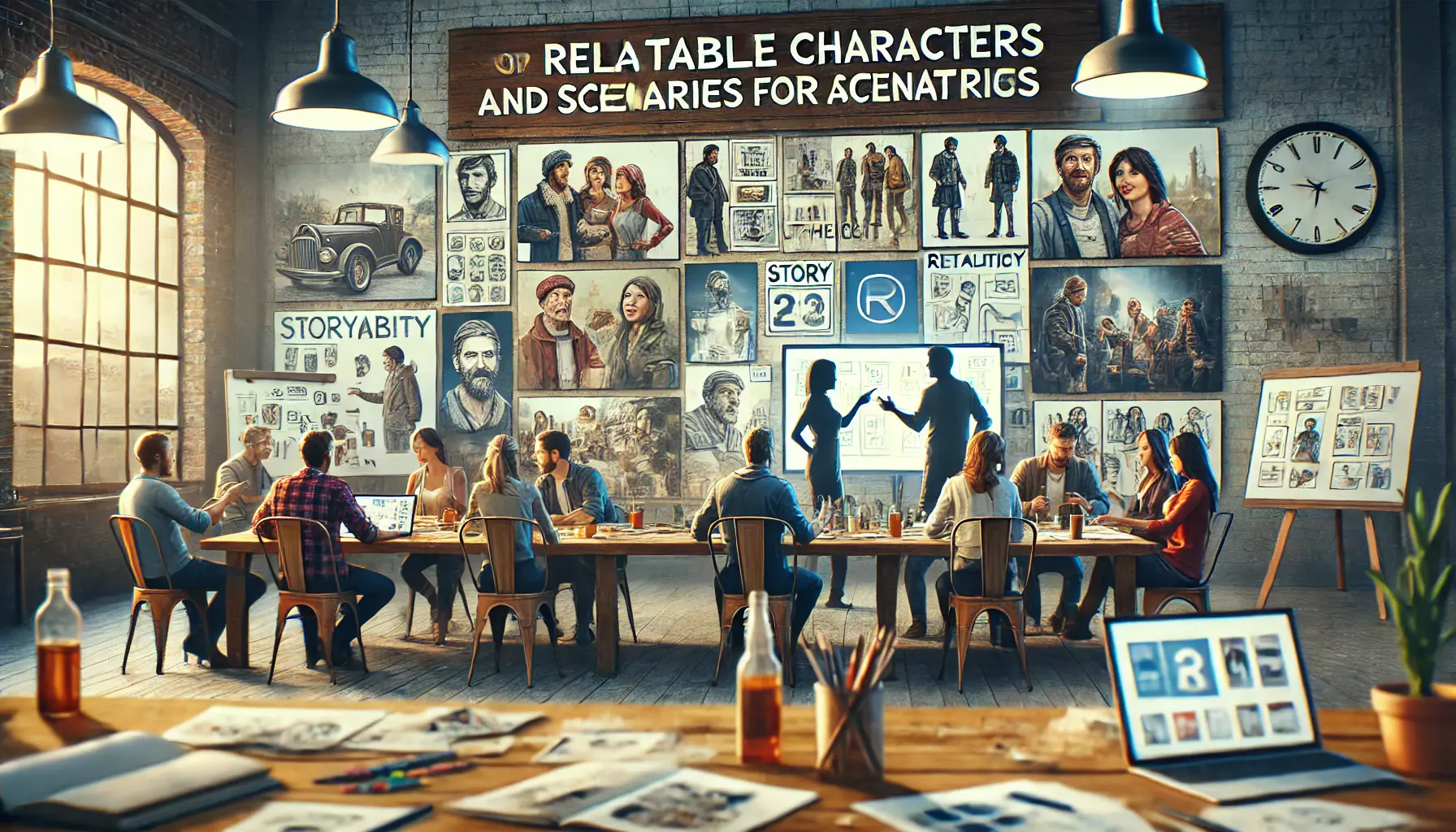
Creating authentic and relatable characters and scenarios for engaging storytelling in advertising.
Crafting Relatable Characters and Scenarios
Relatable characters and scenarios make your story more engaging.
To achieve this:
- Develop Well-Rounded Characters: Create characters with depth, including strengths, weaknesses, and relatable goals.
- Set Realistic Scenarios: Place characters in situations that reflect everyday experiences of your audience.
- Show Growth and Transformation: Illustrate how characters evolve, mirroring potential changes in your audience’s lives.
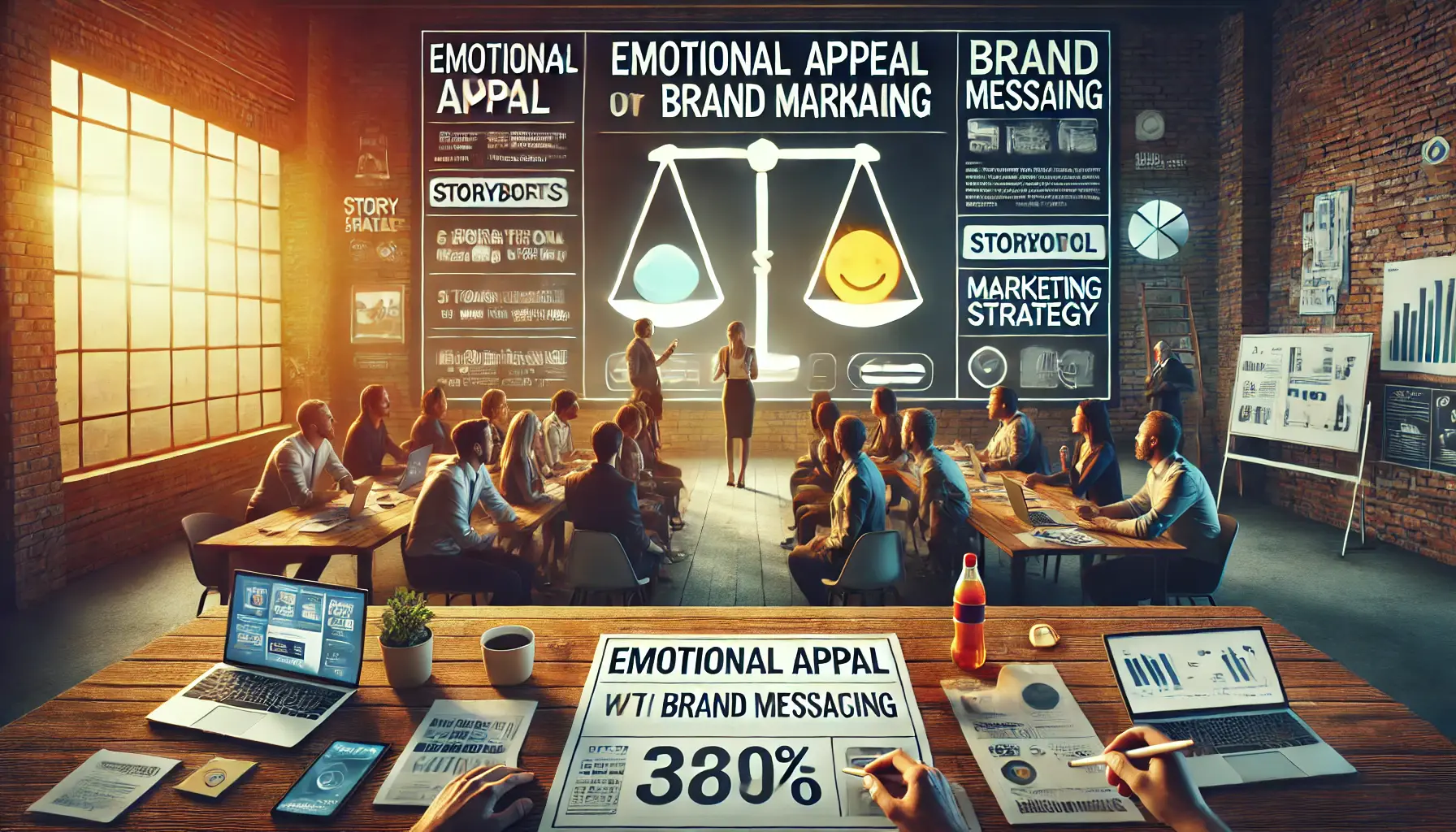
undefined
Balancing Emotional Appeal with Brand Messaging
While emotional appeal is crucial, it must align with your brand message.
To balance both:
- Align Emotions with Brand Values: Ensure the emotions you evoke complement your brand’s core values.
- Integrate Product Naturally: Include your product or service as a natural part of the story, rather than an overt advertisement.
- Maintain Consistency: Ensure the tone remains consistent with your message across all marketing channels.
By applying these emotional storytelling strategies, you can create YouTube ads that not only capture attention but also build lasting connections with your audience.
Emotional storytelling captures hearts and drives action. Focus on authenticity, relatable characters, and scenarios that align with your audience’s values.

undefined
Technique 3: Utilizing Visual Storytelling Elements
In the realm of YouTube advertising, visual storytelling is paramount.
Leveraging compelling visualsImages or graphical elements used to convey information or evoke emotion. can convey complex messages swiftly and effectively, capturing audience attention and enhancing engagement.

undefined
Importance of Visuals in YouTube Ads
Visual elements are processed by the human brain faster than text, making them crucial in the brief window available to capture viewer interest.
High-quality visuals can evoke emotions, illustrate narratives, and reinforce brand identityThe visible elements of a brand, such as logo and colors, that distinguish it from competitors., all of which contribute to a memorable ad experience.

Integrating brand elements such as logos, colors, and typography naturally into advertisements to maintain brand consistency.
Incorporating Brand Elements Seamlessly
Integrating brand elements such as logos, color schemes, and typographyThe style and appearance of printed or digital text. into your visuals ensures brand recognition and consistency.
To achieve this:
- Consistent Branding: Use your brand’s color palette and fonts throughout the ad to maintain a cohesive look.
- Subtle Logo Placement: Incorporate your logo in a way that complements the visual narrative without overpowering it.
- Product Integration: Showcase your product or service within the story context to highlight its relevance naturally.

Balancing visual appeal with clear messaging in advertising design.
Balancing Visual Appeal with Message Clarity
While great visuals are necessary, they should not override the message.
To achieve this balance:
- Prioritize Clarity: Let the visuals enhance the storyline rather than drawing attention away from it.
- Maintain Simplicity: Avoid cluttered scenes and only include elements that help move the story along.
- Align with Brand Voice: Use visual styles that match your brand’s personality and values.
By thoughtfully integrating visual storytelling elements, you can create visually stunning YouTube ads that effectively carry your brand’s message while captivating your audience.
High-quality visuals communicate faster than text, reinforcing your brand identity and creating captivating ads that stand out.
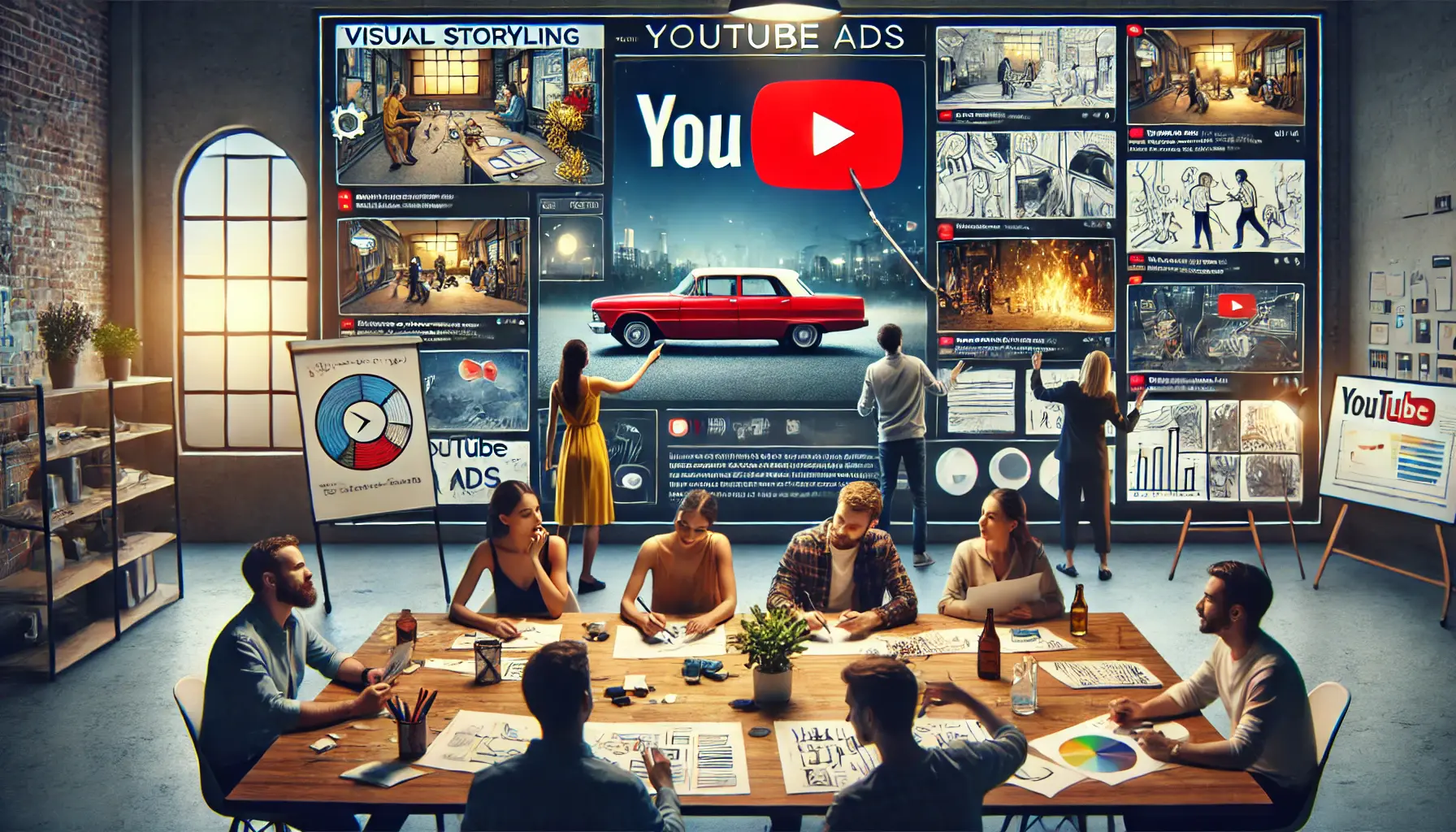
undefined
Integrating Storytelling Techniques into Your YouTube Ads
Effectively incorporating storytelling into your YouTube ads can significantly enhance viewer engagement and brand recall.
By weaving compelling narratives, you can transform standard advertisements into memorable experiences that resonate with your audience.

Aligning a brand’s storytelling with its core objectives to ensure consistency and strategy.
Aligning Storytelling with Brand Objectives
To ensure your storytelling efforts are impactful, align them with your brand’s objectives:
- Define Clear Goals: Determine what you aim to achieve with your ad—be it brand awareness, lead generation, or product promotion.
- Maintain Brand Consistency: Ensure the story reflects your brand’s voice, values, and messaging to reinforce brand identity.
- Target Audience Relevance: Craft narratives that resonate with your target demographic’s interests and needs.
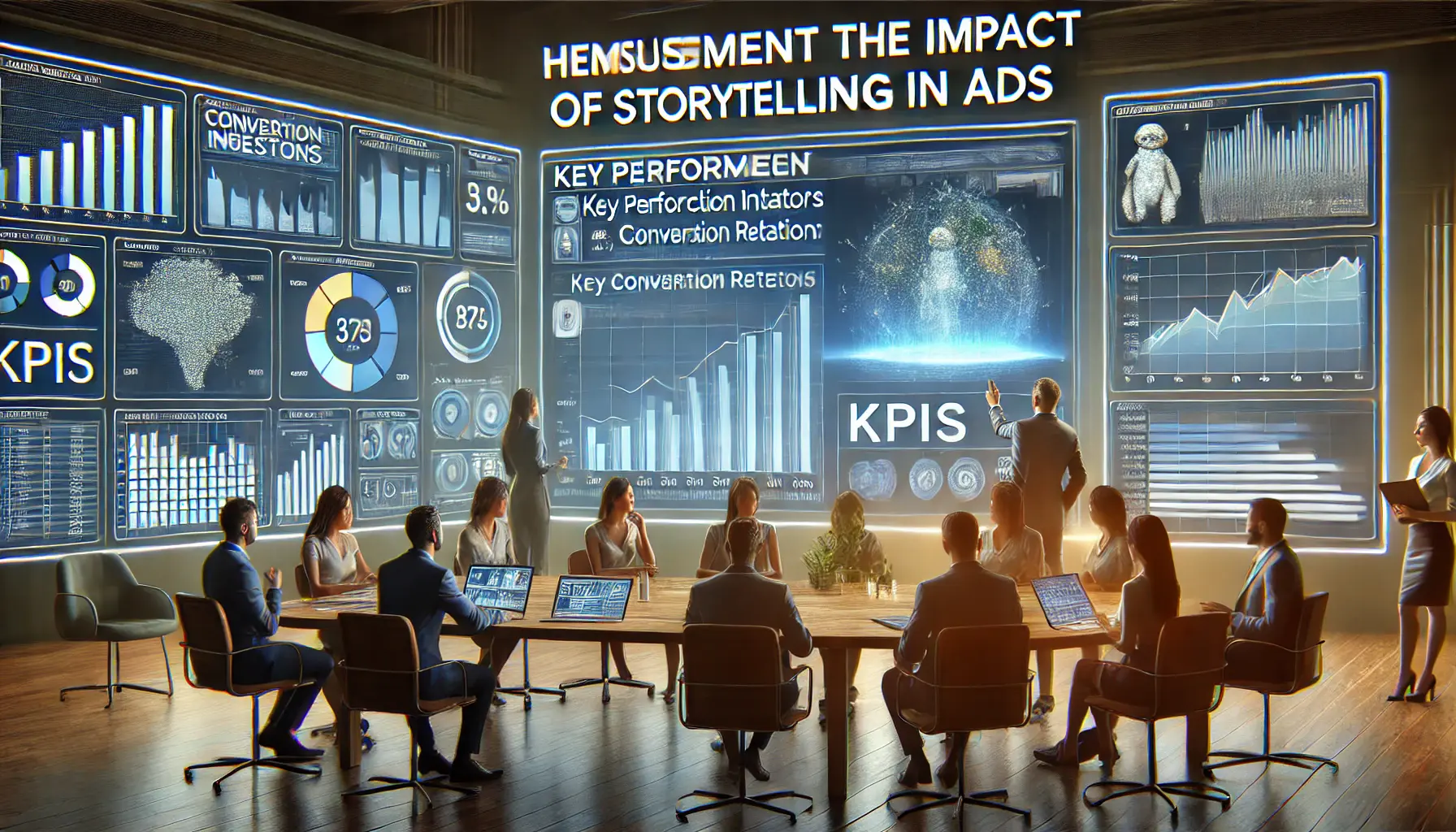
Analyzing the effectiveness of storytelling in ads using data and key performance metrics.
Measuring the Impact of Storytelling in Ads
Assessing the effectiveness of storytelling in your ads is crucial for continuous improvement:
- Engagement Metrics: Monitor likes, shares, comments, and watch time to gauge viewer interaction.
- Conversion Rates: Track actions taken after viewing the ad, such as website visits or purchases.
- Brand Recall Studies: Conduct surveys to measure how well viewers remember your brand post-ad exposure.
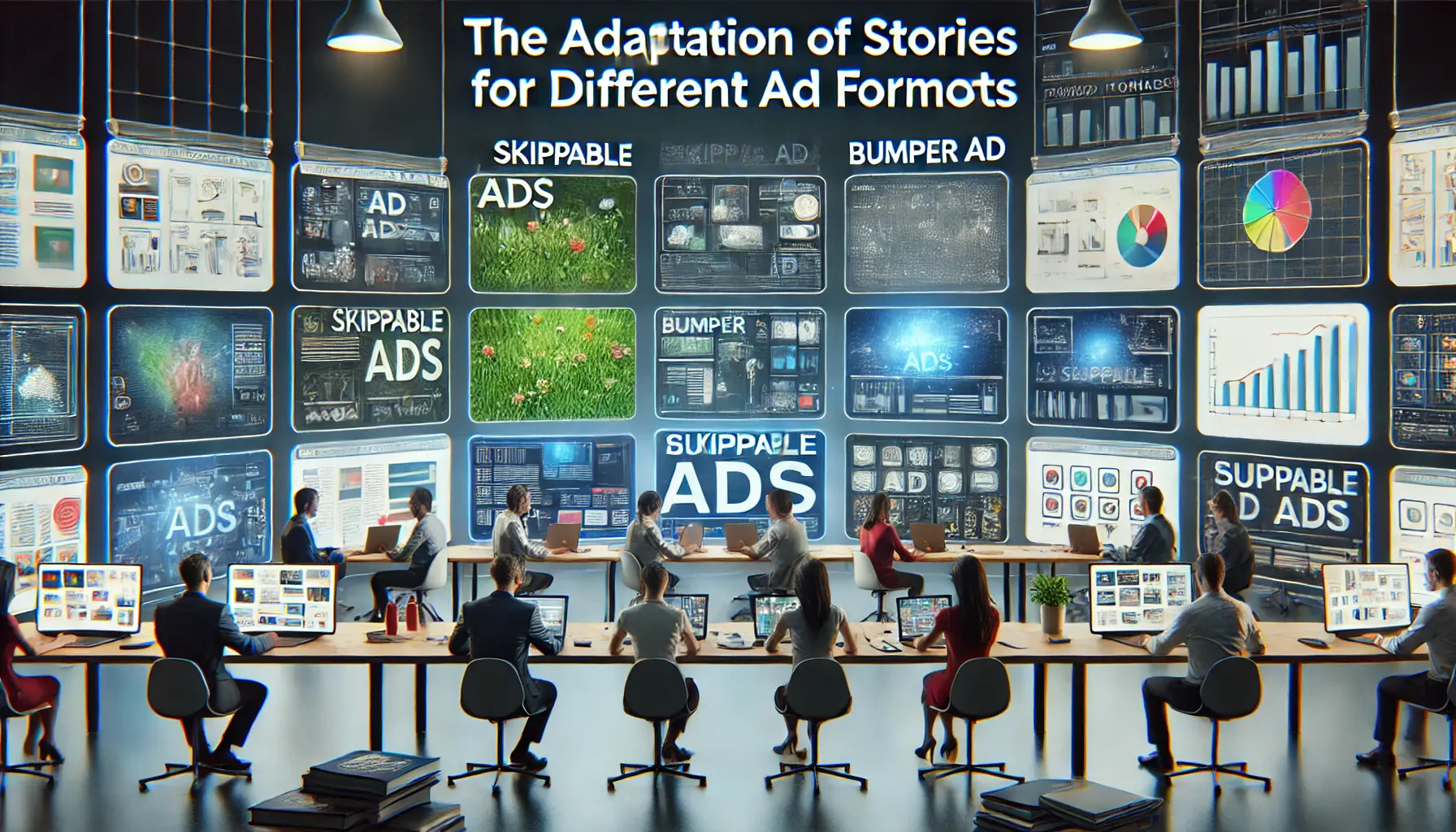
Adapting storytelling techniques to fit various ad formats, ensuring clarity and impact in all formats.
Adapting Stories for Different Ad Formats
Tailor your approach to storytelling for different ad formats on YouTube:
- Skippable In-Stream Ads: Engage viewers within the first few seconds in a manner that compels them to keep watching.
- Non-Skippable Ads: Create succinct and impactful stories to deliver your message within the allotted time.
- Bumper Ads: Take advantage of the six-second opportunity to highlight crucial messages or evoke strong emotions.
By thoughtfully integrating storytelling techniques into your YouTube ads, you can create engaging content that not only captures attention but also drives meaningful engagement while achieving your marketing objectives.
Tailor storytelling techniques to your brand objectives and ad formats to maximize engagement and brand recall.
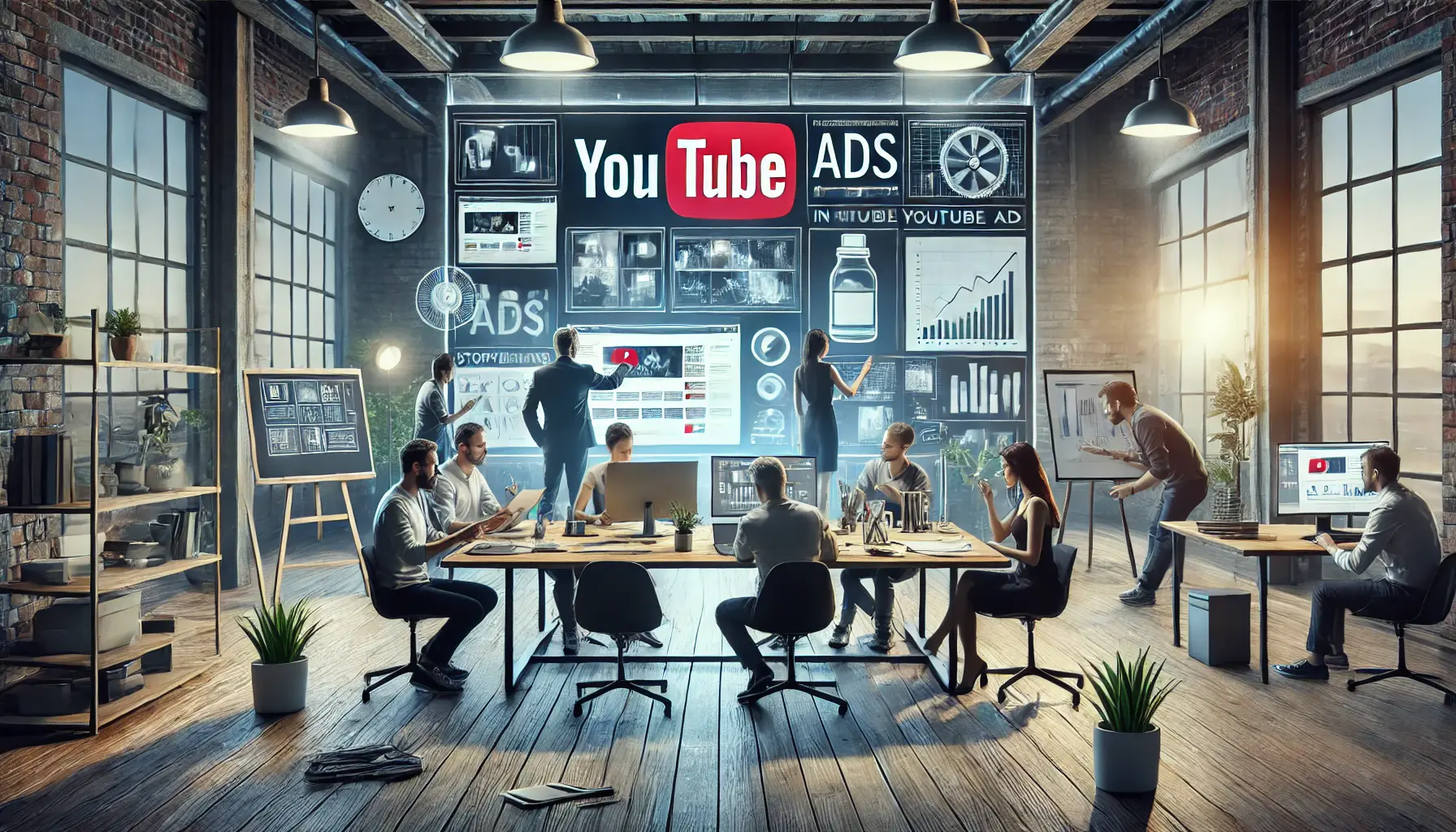
Mastering the art of storytelling in YouTube ads through collaboration and strategic creativity.
Mastering Storytelling in YouTube Ads
Storytelling is an indispensable tool in the world of YouTube advertising.
By incorporating effective storytelling techniques, brands can create compelling narratives that resonate deeply with their audience, foster emotional connections, and drive meaningful engagement.
From understanding the Hero’s Journey to leveraging visual and emotional elements, storytelling transforms ads into memorable experiences that leave a lasting impression.

Discussing key takeaways for effective storytelling in advertising through collaboration and strategy.
Key Takeaways for Effective Storytelling
Throughout this article, we’ve explored several techniques and strategies to master storytelling in your YouTube ads.
Here’s a quick recap:
- The Hero’s Journey Framework: Use this timeless narrative structure to position your audience as heroes, with your product or service as their guide.
- Emotional Storytelling: Connect with viewers on a personal level by evoking emotions that align with your brand values.
- Visual Storytelling: Leverage the power of visuals to tell engaging stories that capture attention and reinforce brand identity.
- Adaptation for Formats: Tailor your storytelling approach to different YouTube ad formats, including skippable, non-skippable, and bumper ads, to maximize impact.
- Measurement and Optimization: Regularly evaluate the performance of your storytelling ads through engagement metrics, conversion rates, and brand recall studies to refine your strategies.

Analyzing the value of storytelling in driving brand growth and engagement.
The Worth of Storytelling to Brand Growth
Storytelling isn’t just about creating an ad; it is a powerful way to establish a bond between your brand and your audience.
When done effectively, storytelling can:
- Build trust and credibility by showcasing authenticity.
- Enhance audience retention and recall, making your brand memorable.
- Drive emotional engagement that motivates action, from clicks to conversions.
By integrating these storytelling techniques, you can not only elevate the quality of your YouTube ads but also strengthen your brand’s position in the market.
Storytelling isn’t merely a creative endeavor; it’s a strategic tool for sustainable growth and customer loyalty.

Planning the next steps in a creative or marketing strategy, reflecting forward momentum and decision-making.
Your Next Steps
Now it’s time to put these insights into action.
Reflect on your brand’s core values, understand your audience’s needs, and start crafting stories that captivate and inspire.
Whether you’re using the Hero’s Journey, emotional hooks, or powerful visuals, let your creativity and strategic intent guide your YouTube ad campaigns to success.
Storytelling can take time to master, but it is well worth the effort.
Start telling your story now and watch your YouTube ads evolve into powerful tools for engagement, growth, and lasting impact.
- Use frameworks like the Hero’s Journey to create relatable narratives.
- Incorporate emotional and visual storytelling elements for deeper connections.
- Measure results and optimize storytelling strategies for better outcomes.
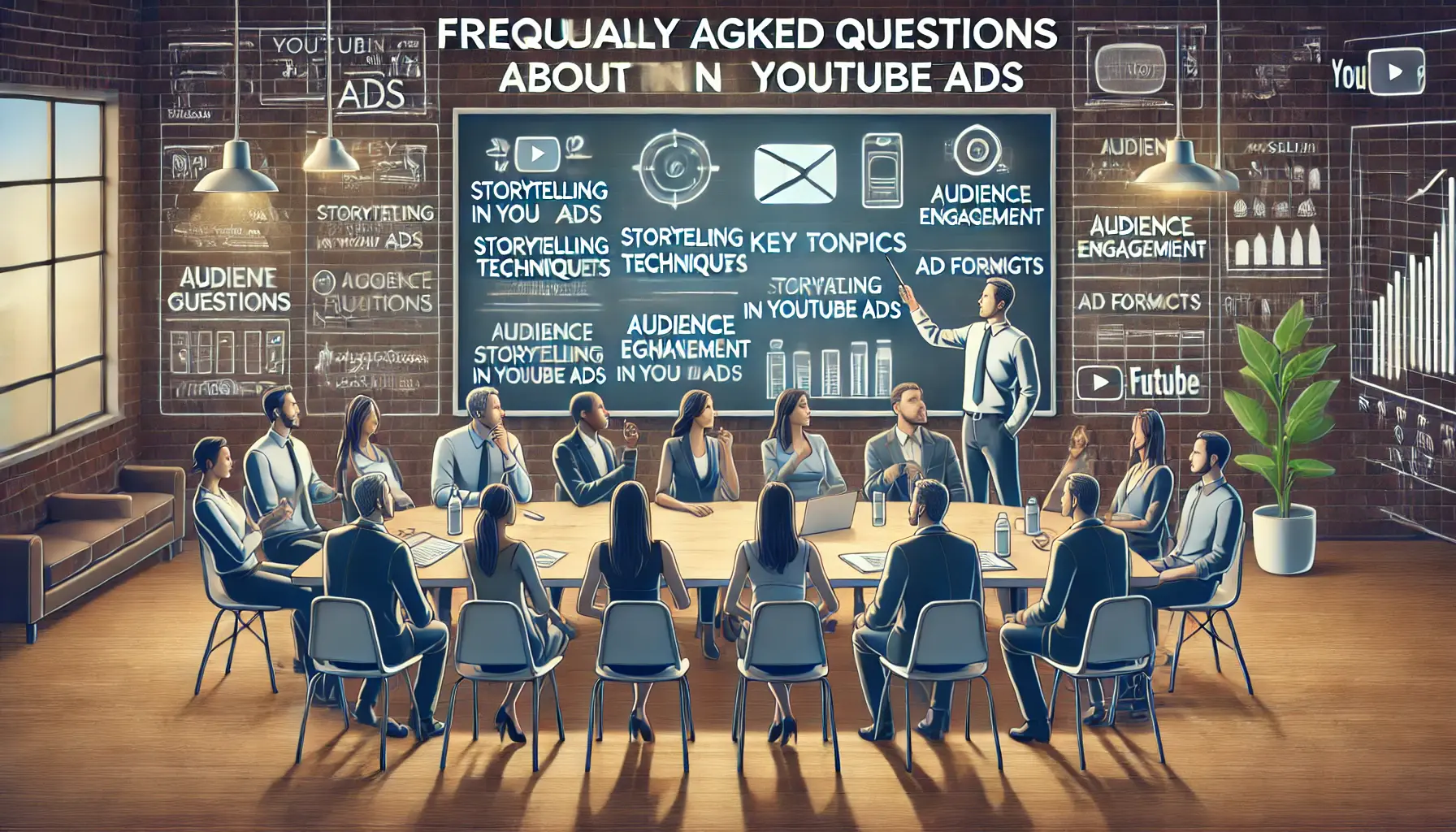
A team collaborating and answering key questions about storytelling techniques in YouTube ads.
Your campaigns can be managed by an agency specialized in Google Ads, check out our service page.
Frequently Asked Questions About Storytelling in YouTube Ads
Enhance your YouTube advertising by mastering storytelling techniques.
Below are common questions and concise answers to guide you.
Storytelling engages viewers emotionally, making ads more memorable and increasing brand recall, leading to higher engagement and conversion ratesThe percentage of users who take a desired action, such as making a purchase after seeing an ad..
Position your audience as the hero facing a challenge, with your product or service acting as the guide that leads them to success.
Focus on emotions that align with your brand values and resonate with your target audience, such as joy, empathy, or inspiration.
Compelling visuals quickly convey messages, evoke emotions, and reinforce brand identity, making your ad more engaging and memorable.
Yes, even brief ads can tell impactful stories by focusing on a single, clear message and evoking strong emotions.
Monitor engagement metricsMeasures of user interaction with content, such as likes, shares, and comments. like views, likes, shares, and comments, as well as conversion rates and brand recall studies.
Yes, tailor your storytelling to fit the ad format, ensuring the message is clear and impactful within the given time constraints.
Develop narratives that reflect your brand’s core values, mission, and the needs of your target audience to maintain consistency.
Avoid overly complex plots, misalignment with brand values, and neglecting a clear call-to-action, as these can confuse or disengage viewers.





